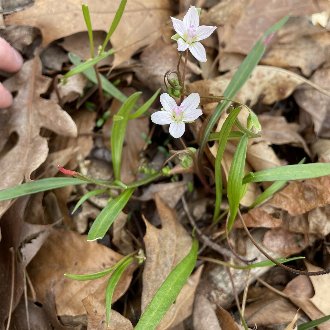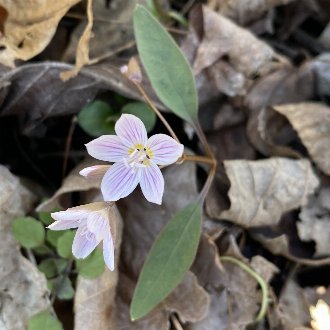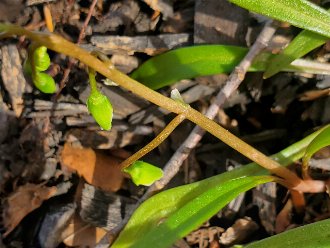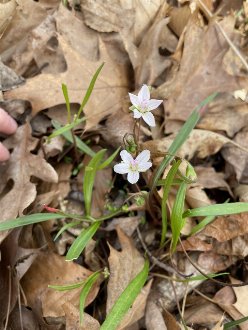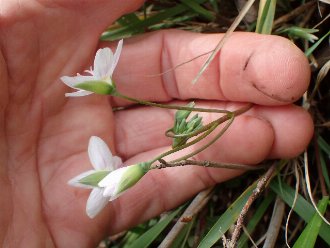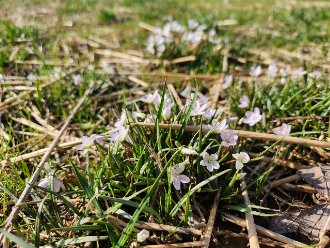Narrow-leaved Spring Beauty (Claytonia virginica L.)
Also known as Virginia spring beauty, Virginia springbeauty, narrow-leaved spring-beauty, eastern spring beauty, fairy spud.
↑Summary
A common spring ephemeral native to the eastern US and Canada, with small flowers and narrow leaves.
↑Similar Plants
↑Habitat
Virginia spring beauty is found in a wide variety of partly-to-lightly-shaded habitats in the eastern US and Canada. Natural habitats include deciduous woods, especially open woods and areas around cliffs or rock outcroppings, savannas, and occasionally in prairies. Anthropogenic habitats include parks, gardens, cemeteries, partly-shaded lawns, and abandoned fields.
It tolerates a range of moisture conditions, from consistently moist to dry-mesic, but it requires good drainage; it is restricted to the better-drained portions of floodplains. It is mostly-restricted to soils with a pH less than 6.0, but prefers soils towards the high end of this range and becomes less common on strongly acidic soils. It requires a well-developed soil rich in organic matter and is most abundant in loam and clay-loam. In soils with a higher clay, sand, or rock content, it is more demanding of organic matter as it can suffer from both drought and poor drainage.
Relative to other spring ephemerals, Virginia spring beauty is slightly more tolerant of degradation and disturbance, and as such it has fared slightly better in response to widespread habitat destruction by humans. It is not among the early colonizers of disturbed sites, but it returns much earlier than most other forest-dwelling spring ephemerals.
↑Notes
Some sources cite the common "grass-flower" to refer to this species but we recommend against the use of that name because it has been used to refer to a nearly endless variety of flowering plants that commonly grow in lawns.
↑Links & External Resources
• Claytonia virginica (Spring Beauty) | Illinois Wildflowers (About This Site)
• Claytonia virginica (Virginia springbeauty) | USDA PLANTS Database (About This Site)
• Claytonia virginica | Go Botany (About This Site)
• Claytonia virginica (Spring Beauty) | Missouri Botanical Garden Plant Finder (About This Site)
• Claytonia virginica | Biota of North America Project (BONAP) (About This Site)
• Claytonia virginica | NatureServe Explorer (About This Site)
• Claytonia virginica | Flora of North America (About This Site)
• Claytonia virginica | Missouri Plants (About This Site)
• Virginia Springbeauty | Maryland Biodiversity Project (About This Site)
• Claytonia virginica (Virginia Spring Beauty) | Minnesota Wildflowers (About This Site)
• Claytonia virginica L. | Plants of the World Online (POWO) (About This Site)
• Claytonia virginica L. (Spring Beauty, Virginia Spring Beauty, Eastern Spring Beauty) | Digital Atlas of the Virginia Flora (About This Site)



